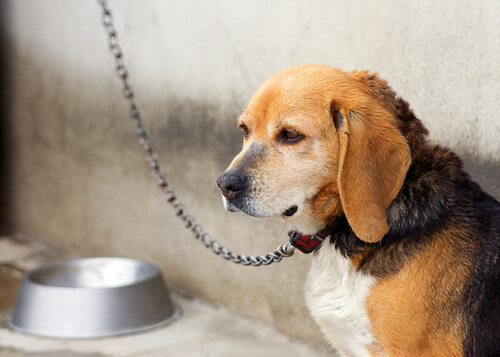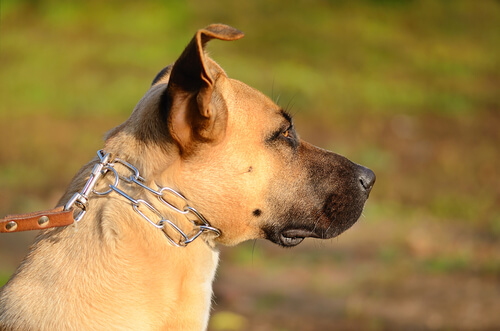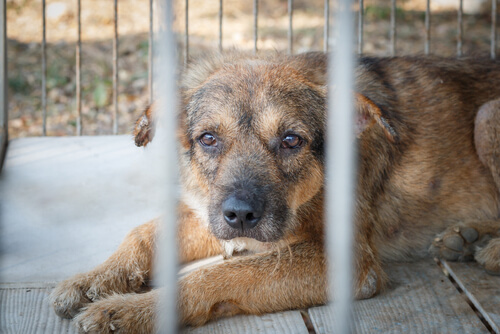Neighbors Jump a Wall to Save a Chained Dog

When it comes to cruelty against animals, word has spread about the story of a chained dog. The dog was muzzled constantly. Fortunately, the neighbors jumped over a fence to help him.
The animal remained muzzled and chained by its owner for a long time. And, he spent his days in solitude. In fact, he was always chained with his snout closed with adhesive tape. Although the neighbors called the police many times, they never came.
And so, the neighbors were troubled by the thought of not being able to help. So, the people near the chained dog’s house decided to take matters into their own hands. And, that is why they jumped over the wall to enter the house and take the dog out of the hell in which he spent all his days.
Cases similar to the chained dog

A similar story to this one is that of Benji. He was a dog who was chained for so many years, he ended up looking like skin and bones. Now, he is hardly recognizable. Luckily, he has recovered his physique and vigor.
Benji was chained up for years. But, thankfully he has a new life now. And, he knows happiness. Of course, this is all thanks to a group of people who fought to rescue him. Not only was he “skin and bones”, but also his body was filled with wounds. The wounds were made by rocks that had been thrown at him.
When Benji was rescued, he would not stop crying. Those who rescued him did everything they could to make him feel comfortable. Before he could be put up for adoption, his wounds needed to be cured. And, he had to gain some weight back. It was also very important that he learn to trust people and know that not all humans are as cruel as those he had known before.
A week after his rescue, Benji already had a friend. Then he lived in several homes, to get accustomed to his new life. At last he got a permanent home, and ceased to be a chained dog. He has an owner who adores him, and some kind doggie brothers who have welcomed him to the family.
What can I do to fight cruelty to dogs and other animals?
- The first thing to know is that animal cruelty is a crime, typified and punished in the Penal Code. In addition, it is considered a “public action” crime. In other words, in can be denounced by anyone.
- To denounce cruelty, you must provide as much proof as possible about the event itself. This proof may be through photographs, videos, necropsies, veterinarian reports, witnesses, etc.
- You must also compile all possible data on the perpetrator of the abuse. (Name, address, and any other information related to the abuser).
- Like a report, you can also file a criminal complaint to these cases of animal abuse, to start a judicial process and punish the crime.
- The investigation process and sanctioning of these actions is similar to that used to punish other more common types of crimes.
A few thoughts about stray animals
- Only health services can remove stray dogs from public places and/or eliminate them, since the regulation on prevention and control of rabies gives such jurisdiction to them, and not to municipalities.

- In the case of the elimination of stray animals, the means used by authorities must be rational and appropriate. For example, there has been a lot of take about strychnine use. Strychnine is not considered an appropriate means, according to judicial jurisprudence.
- The law decides how animals should be removed or eliminated. Therefore, it is law enforcement and the police force’s choice as to what option to use.
- As to the number of animals that can be kept in a home, the law (health code) states that a regulation will establish the maximum number of animals that can be tolerated in a house, room, or in public or private premises, and that regulation has not been dictated yet.
- The regulation of the keeping of animals in private buildings will be decided by law. However, some communities or buildings may regulate this through provisions on nuisance noises, or safety ordinances, or rules about the use of common places.
- Health services, as well as city councils or municipal authorities, may issue penalties.
